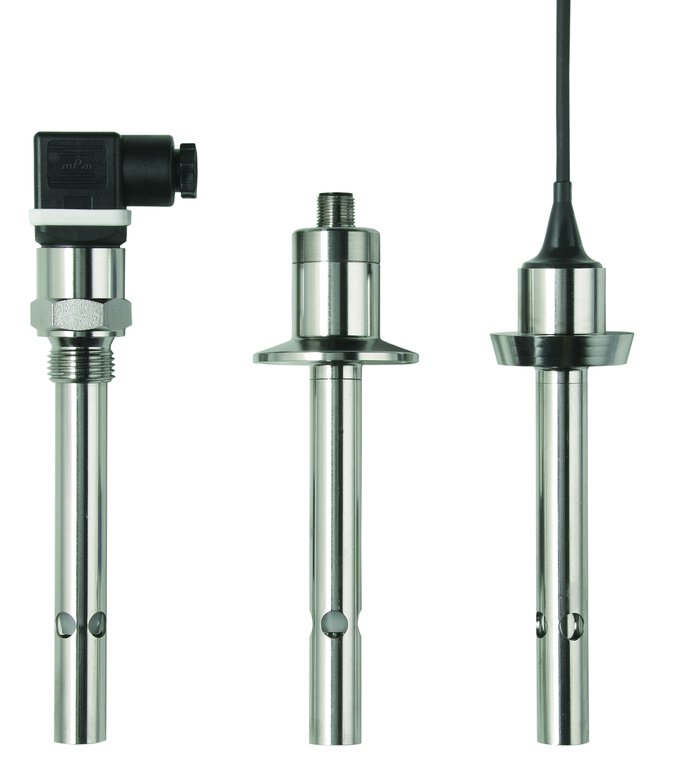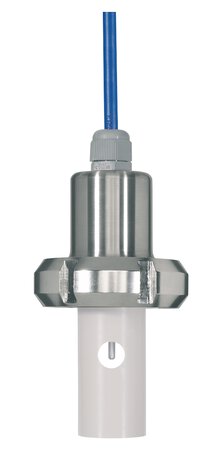

Reverse osmosis in industry - measurement sensors and automation solutions
Reverse osmosis, as an effective and environmentally friendly method of water treatment, has become one of the key processes in many industries, ever wondered how this process can be optimized and what are the latest water quality monitoring technologies? In this article, we will introduce the mechanisms of reverse osmosis, discuss the properties of water obtained by this method, and present dedicated advanced measurement sensors and automation solutions. Read more!
Reverse osmosis - what is this method of water purification?
The process reverse osmosis (RO) is based on the phenomenon of diffusion, which is the movement of molecules from an area of higher concentration to an area of lower concentration. In the case of RO, the contaminated water is subjected to high pressure to force it to flow through a semi-permeable membrane. This osmotic membrane has microscopic pores that are small enough to allow only water molecules to pass through, and contaminants such as mineral salts, pesticides, bacteria, viruses and other chemicals,are retained on the opposite side.
The reverse osmosis process produces ultrapure water (other terms include purified water, water for injection or water for injection), which has many industrial applications, which we will discuss later in this article.

In the process of osmosis, water flows through a semi-permeable osmotic membrane. Impurities are retained on the surface of the membrane
Properties of water obtained by reverse osmosis process
The properties of ultrapure water are determined by several standards and recommendations, such as ASTM, Pharmacopoea Europaea, USP, DIN or ISO. These standards are very well recognized around the world and many companies use them in the process of producing ultrapure water.
One of the most important properties of water obtained by reverse osmosis is its low electrical conductivity. The reverse osmosis process removes most of the mineral salts that are the main carriers of electricity in water, leading to a lower conductivity. Purified water can have a conductivity of several microsiemens per centimeter (μS/cm), while ordinary untreated water is several hundred to several thousand μS/cm, due to the presence of dissolved mineral salts.

Comparing untreated and clean water, one can see that the conductivity of the latter is much lower
Ultrapure water - application in industry
Water obtained by reverse osmosis is used in many industries where water of the highest quality, free of impurities and chemicals, is required.
Food and beverage industry
Water obtained by RO is indispensable in the food and beverage industry. It is used as an ingredient in food products, for the preparation of beverages in the production of beer, wine and soft drinks, among others.
Chemical industry
RO water in the chemical industry is used in the production of fertilizers, dyes and paints, acting as a solvent and coolant.
Pharmaceutical industry
In the pharmaceutical industry, it is used in the production of drugs, and as an ingredient in the manufacturing process.
Cosmetic industry
In the cosmetics industry, it is used as an ingredient in the production of cosmetics such as creams, shampoos and makeup remover.
Electronics industry
The water is used as an ingredient in the manufacturing processes of microprocessors and other electronic devices
Reverse osmosis systems - measurement sensors and automation solutions
To ensure the quality of water obtained by RO, it is necessary to monitor water quality parameters such as conductivity and temperature.
A complete measurement system for measuring high-purity water consists of:
- Transmitter/controller for high-purity water, e.g. JUMO AQUIS 500 CR
- Conductivity sensor for water with high purity, with a precisely measured cell constant.
Conductivity can help us assess water quality quickly and reliably. The conductivity sensor measures the sum of all ions present in the solution. The best for this application are two-electrode conductivity sensors, such as the JUMO tecLine CR.

JUMO tecLine CR dual-electrode conductivity sensors dedicated to the pharmaceutical industry

Universal conductivity sensor with integrated temperature sensor
-
Temperature sensor (usually integrated into the conductivity cell)
Since conductivity also depends on temperature, measurement results are usually adjusted to a standard temperature of 25°C (by temperature compensation). Temperature can be measured by a separate or by a temperature sensor integrated into the conductivity cell.
- Connection cable
Optional:
- Pressure sensor - used, among other things, in pre-filtration in pharmaceuticals and in marine treatment, due to its high salt content.

Measurement system for reverse osmosis water purification
Reverse osmosis process - what steps should be taken to ensure optimal performance?
To ensure optimal performance of the reverse osmosis (RO) process, it is necessary to take several steps.
- First of all, it is necessary to conduct an analysis of the quality of the raw water to be subjected to the RO process. This water must be properly prepared before entering the RO system, which will prevent damage to the RO membranes.
- The second step is to properly design and selection of RO system components. An RO system consists of many components, such as pumps, filters, RO membranes, conductivity transducers/regulators, conductivity meters, pH electrodes, temperature sensors, pressure transducers and many others.
- The next step is to regularly keeping the RO system clean and performing maintenance. If cleaning is not performed, fouling will settle on the RO membranes, reducing the efficiency of the process and shortening their life.
- The last but equally important step is to monitor the performance of the RO system. This allows you to detect possible problems and take appropriate corrective steps to ensure process continuity and achieve optimal performance.
Benefits and challenges of reverse osmosis water treatment
One of the major benefit is the ability to obtain high-quality water that is free of harmful substances, salts and bacteria. Such water is essential for many industries, such as the production of medicines, cosmetics, beverages and microelectronics. RO water treatment is also more environmentally friendly than traditional methods, as it reduces the the amount of water used and eliminates the need for chemicals.
However, the reverse osmosis process is expensive to maintain and requires a lot of money. RO equipment requires regular maintenance and replacement of components, which increases maintenance costs. In addition, the process requires energy, which contributes to greenhouse gas emissions.
Another challenge associated with reverse osmosis water treatment is the problem of with salt deposits that settle on the RO membrane and can damage it. Therefore, regular inspection and cleaning of the membranes is necessary, which also comes at a cost.
To sum up, water treatment using reverse osmosis has many benefits, but it also involves also comes with some challenges and costs, which can be minimized by by choosing good quality measurement sensors. However, it is worth remembering that high-quality water is essential for many industries, and RO is one of the most effective ways to obtain it.
- ${title}${badge}

